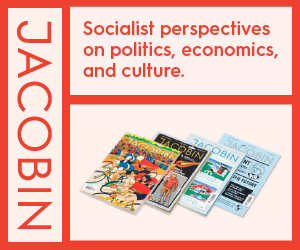The pandemic’s unflattering glare: How the crisis is affecting care workers and prisoners

A prisoner inside the Hamilton-Wentworth Detention Centre (also known as Barton Jail) tested positive for COVID-19 in late-March. Photo courtesy of the Hamilton Spectator.
Multiple and concurrent disasters are unfolding in pockets all across North America connected to the spread of the COVID-19 pandemic. We understand this particularly in medical settings or in geographic contexts such as the hot spots in Seattle and New York City. But we will also witness disaster in institutional contexts, where a human tragedy is unfolding. Two striking examples are care facilities for frail elderly and disabled people, and penal institutions.
In long-term care facilities and in prisons, vulnerable workers and incarcerated people alike are facing dramatically inflated rates of COVID-19 infection and deaths. This should raise serious questions about the value that we place on the labour and lives of people who work in these institutions, or are incarcerated involuntarily.
In the case of care workers, the early elevated rates of pandemic amongst this workforce, particularly low wage, insecure and non-unionized workers, forces us to see the critical mistake of devaluing certain types of highly feminized labour connected to care. Government austerity programs and for-profit care provision have both placed workers in vulnerable positions. This is clearer than ever in the time of a dangerous pandemic putting pressure on workers who cannot afford time away from work to protect themselves and are also working with medically susceptible populations without adequate personal protective equipment.
Recent blog posts by feminist economist Nancy Folbre highlight how the market-driven assumptions behind care provision in the United States are failing, with care workers as a critical casualty. Exploring a “care theory of value,” Folbre explains that the financial case for providing care to the elderly is a weak one at best, with costs rising exponentially due to COVID-19. In the absence of a strong profit motive, the care economy typically relies on state support, private families, and individuals motivated by a desire to help others.
The value of paid care work takes on a wholly different character in the current crisis – these are the individuals doing some of the most “dirty”, difficult, and increasingly dangerous jobs. Yet care workers, and specifically those that are deemed “low skill”, are paid less than other workers with comparable education and experience, and are disproportionately migrant and racialized women, some of whom hold precarious immigration statuses. In the COVID-19 context, some care workers have experienced abrupt layoffs (in part explaining Canada’s “she-cession”), while others have seen an intensification of work, often working multiple jobs in multiple locations. In addition, supportive workers who help keep these institutions running, such as cleaners or people in food preparation, are also disproportionately racialized women working in jobs with low pay and low autonomy. Even without choosing to work directly in care work, some are affected by the heightened pandemic risk within care settings.
We could draw comparisons between care workers and a huge number of workplaces in other settings that have traditionally undervalued their labour and relied on the limited autonomy of dependent workers. Yet, the situation is even more precarious for incarcerated people across North America. While this institutional context may not lend itself to a natural comparison to care workers, if we see people in prisons as the most devalued form of labour in our society, we can view them outside of the realm of legal punishment. Prisoners are akin to institutional workers with no form of protest to withdraw their labour or protect themselves from unsafe conditions. This distinguishes them from other affected workers in society, even those employed within correctional facilities, as correctional officers can still exercise their rights to withdraw their labour.
This does not mean that the labour of prisoners is inessential. Multiple states are tasking prison labour with producing badly-needed hand sanitizer and face masks, both essential goods in the fight against COVID-19. The workers (disproportionately poor people of colour) producing them in prisons are the lowest-paid workers in society, labouring for literally pennies an hour.
Much like care workers who are in contact with high-risk populations, entire penal systems are creating high-risk situations for prison workers and for incarcerated people due to close confinement, inadequate safety measures, and an institutionalized lack of concern for the health of inmates.
Prisoners as workers are not just undervalued or devalued in the era of COVID-19, they are perceived to be entirely without value to the larger society. As Folbre points out, for-profit care and hospitals are already struggling with the cost of COVID-19 treatment, regarding each case as a financial loss. For incarcerated populations, there is little or no market motivation to prevent the spread of infection or treat those already infected. Inmates are left defenseless in this system, undoubtedly already aware that they find themselves in an incredibly dangerous situation. The Correctional Service of Canada has censored and punished federal inmates publicly warning about the impending disaster in Canada’s penitentiaries. An inmate at Ohio’s Eklton Correctional Institution recently begged for help by uploading a plea from a smuggled cell phone. But such calls for help from within penal institutions are either suppressed or easily lost in a media climate that is awash in bad news.
Ultimately, for both care workers and prisoners, the COVID-19 pandemic is exposing some glaring and unflattering truths about how we value different types of labour in North American society. Eroding the rights, benefits, and protections of undervalued workers is not only fundamentally inequitable and indefensible at the level of individuals, it is an erosion that threatens everyone in society as we face a crisis requiring these exact forms of labour. This is evident in a pandemic, when any one of us may require care to weather this crisis. It should also be taken as a lesson going forward about the need for organized labour to consolidate protections for all workers, recognizing that no form of work is inessential or marginal.
Ted McCoy is a historian and an Associate Professor in the Sociology Department at the University of Calgary. He is on Twitter at @tedmccoy.
Naomi Lightman is Assistant Professor of Sociology at the University of Calgary. Her research focuses on care work, migration, and gender and has been published in European Sociological Review, Journal of European Social Policy, and International Migration Review. She is the co-author of the second edition of the textbook Social Policy in Canada. You can follow her on Twitter @naomilightman.










